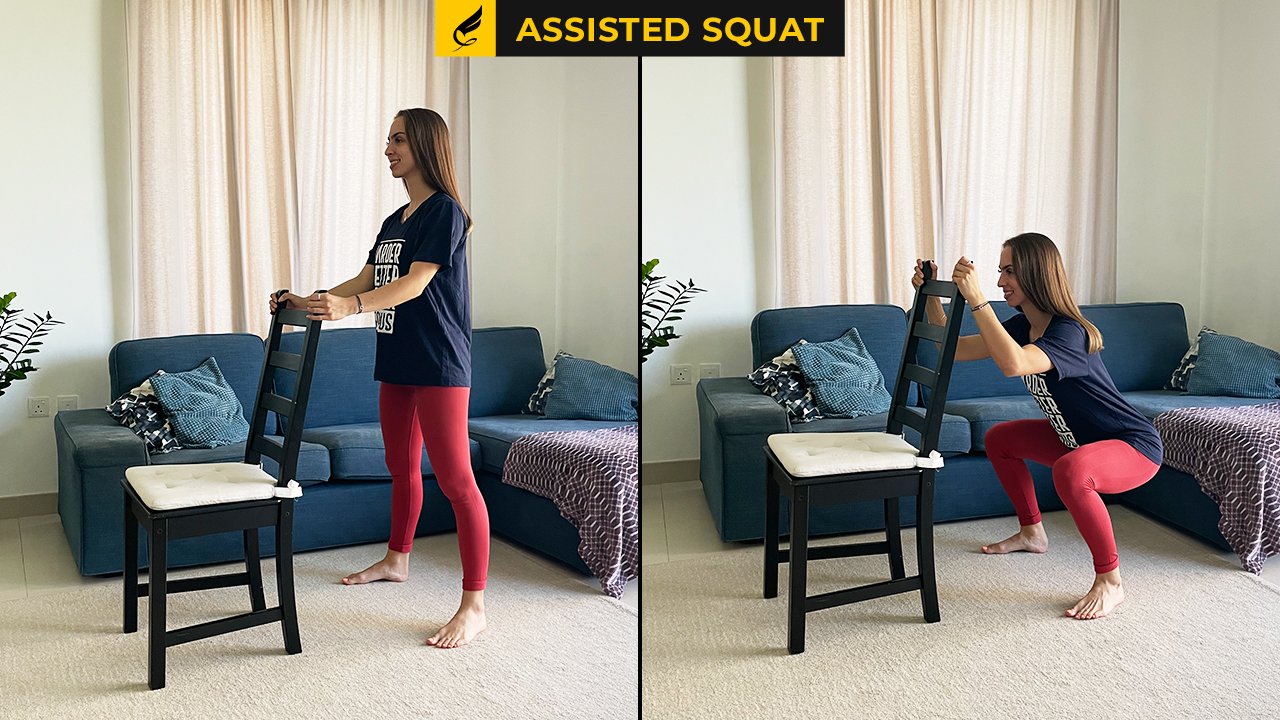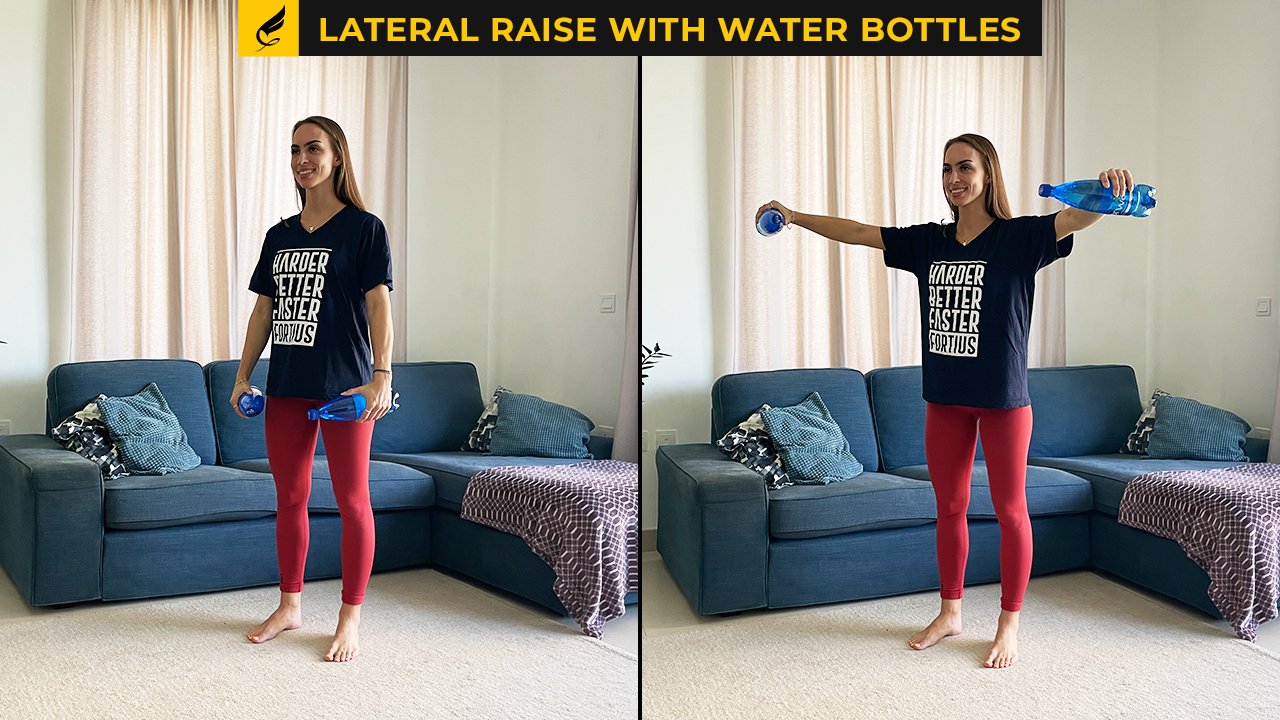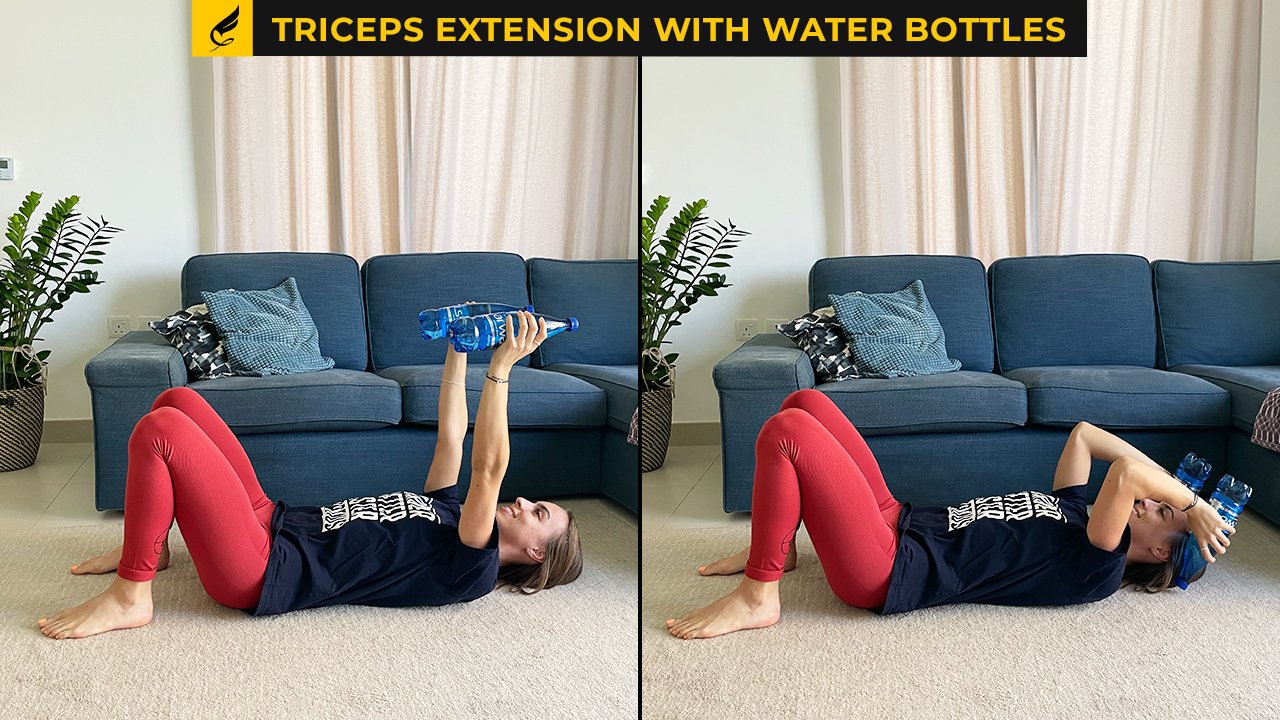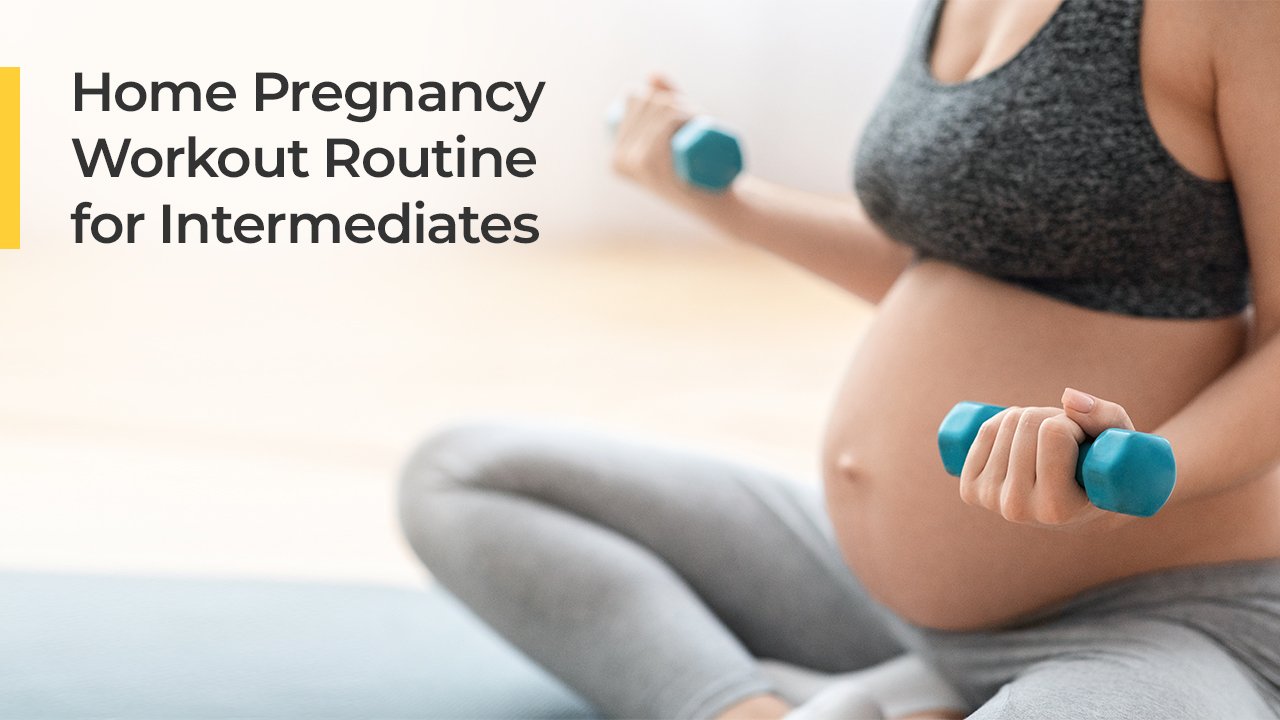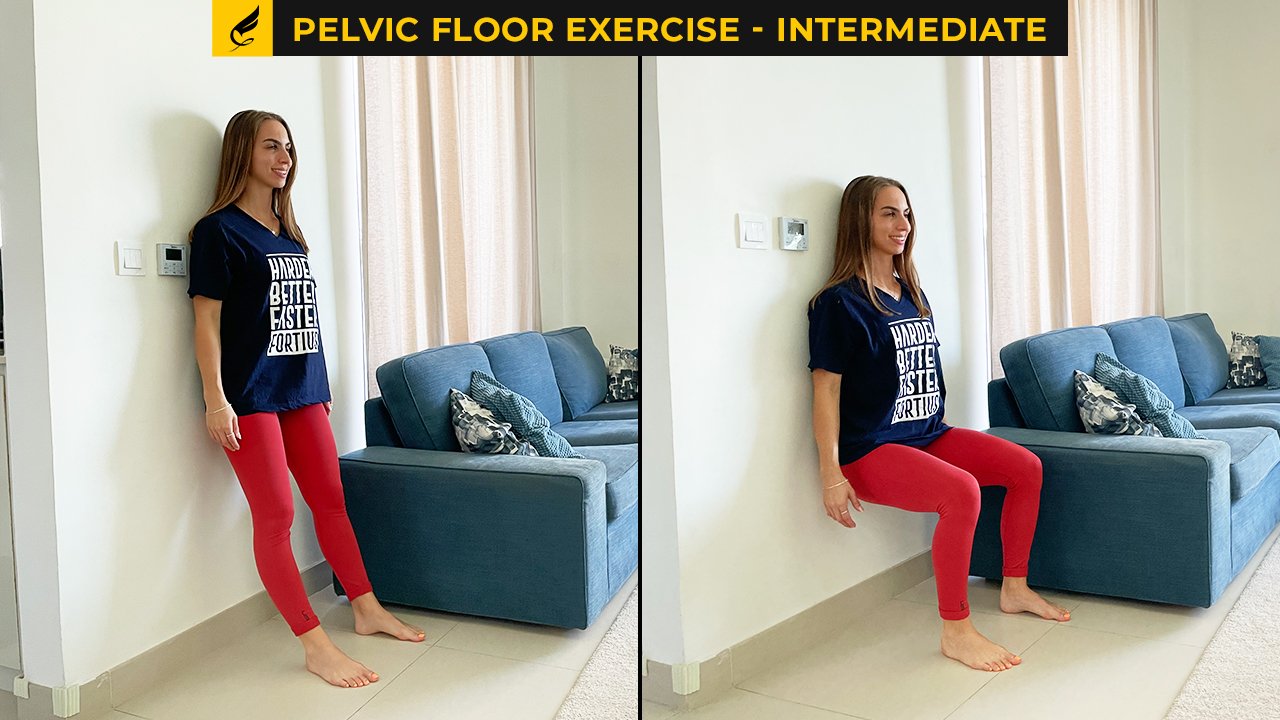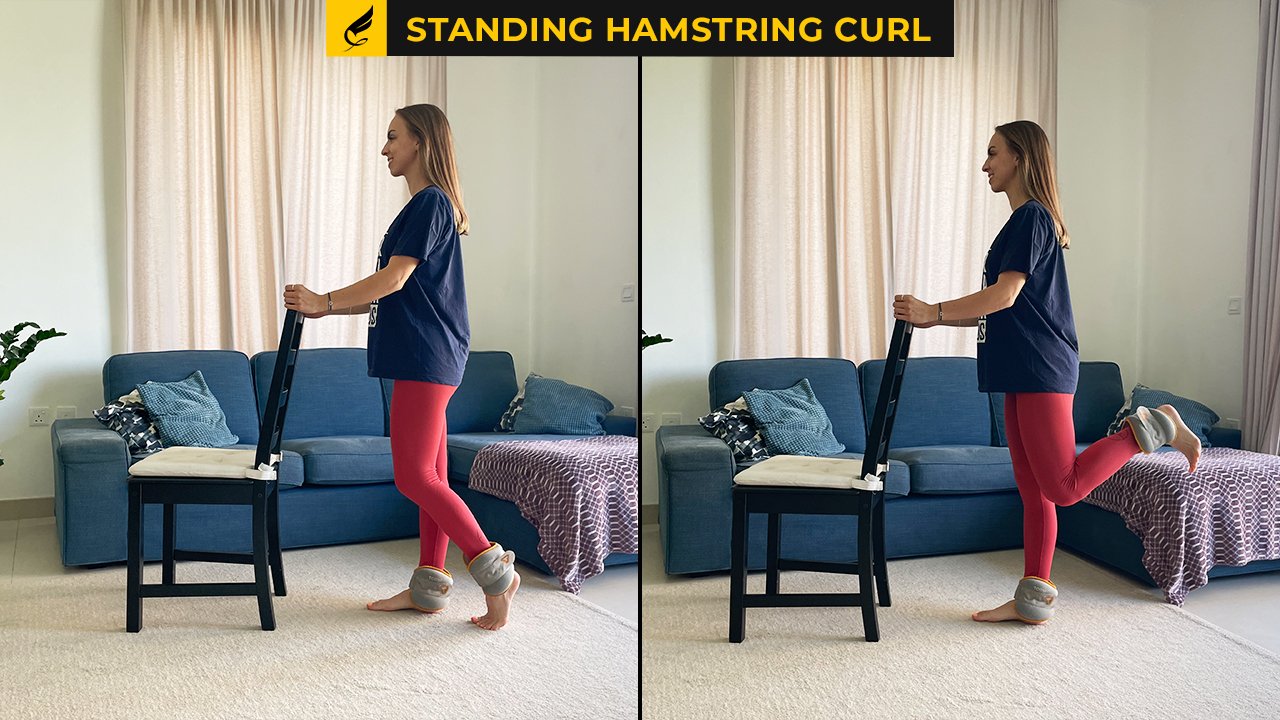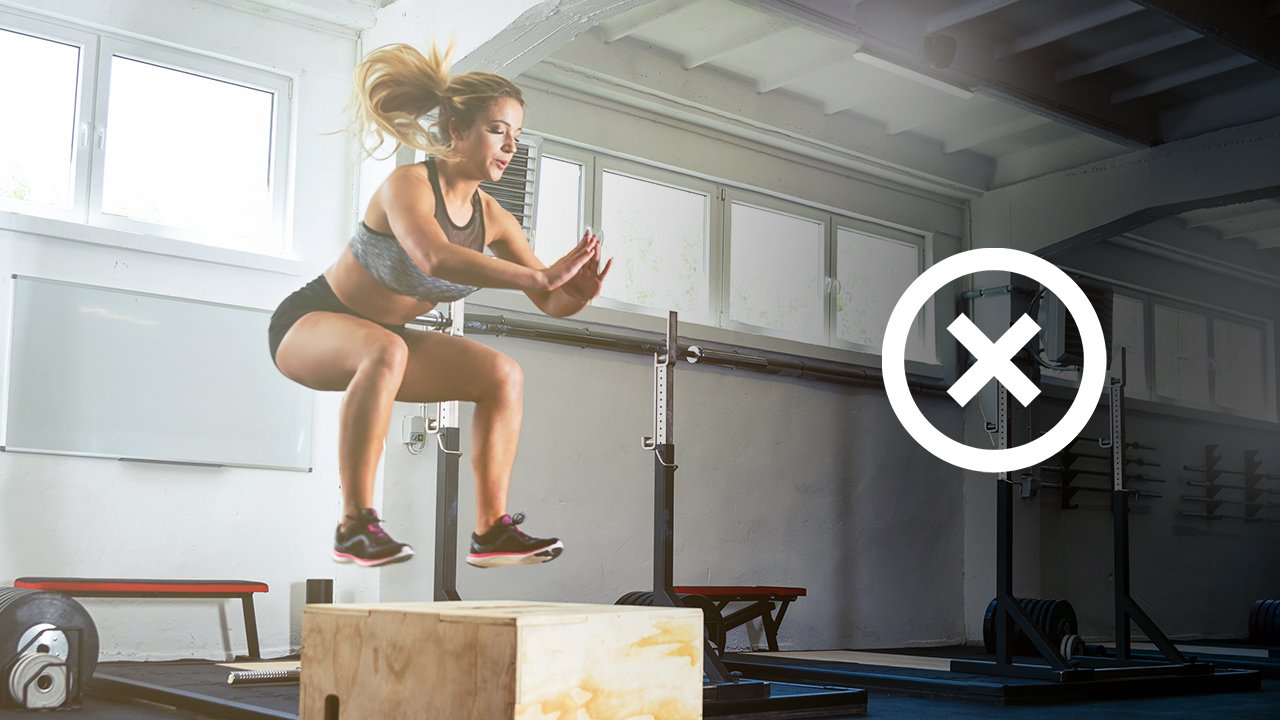Safe Prenatal Workouts in Dubai
Are you pregnant and wondering how to stay active and healthy? Exercise during pregnancy offers numerous benefits for you and your baby, but choosing safe and effective workouts is essential. In this guide, we'll explore prenatal exercises you can do at home and expert tips from Fortius Dubai to ensure a safe and enjoyable fitness journey throughout your pregnancy.
Is Exercise Safe During Pregnancy?
Yes, exercise during pregnancy is generally safe and even encouraged for most women, provided you have clearance from your healthcare provider. The first trimester can be a sensitive period, so it's wise to proceed with caution and avoid strenuous activity. However, once you're past the initial stage, moderate exercise can offer numerous benefits for both you and your baby.
Reap the Rewards: The Benefits of Prenatal Exercise
Prenatal exercise offers many benefits for expectant mothers, contributing to physical and mental well-being throughout pregnancy and beyond.
-
Prenatal workouts help build the strength and endurance needed to cope with the physical demands of pregnancy, labor, and delivery.
-
Regular exercise can alleviate common pregnancy complaints like back pain, constipation, and swelling.
-
Maintaining a healthy weight during pregnancy is crucial for both mother and baby. Prenatal exercise can help you manage weight gain and reduce the risk of complications.
-
Exercise releases endorphins, which can boost mood and alleviate stress, promoting emotional well-being during this transformative time.
-
Staying active during pregnancy can help you regain your pre-pregnancy fitness level more quickly after childbirth.
Incorporating safe and effective prenatal exercises into your routine can empower you to embrace pregnancy's physical and emotional changes with confidence and vitality.
Always consult your healthcare provider before starting any new exercise program during pregnancy.
Meet Coach Andjela Tanasic, Your Prenatal Fitness Expert in Dubai
Andjela Tanasic is a highly experienced personal trainer at Fortius Dubai, specializing in prenatal and postnatal fitness. With a Bachelor's degree in Sports Science and specialized training in prenatal exercise, Andjela is passionate about empowering women to stay active and healthy throughout their pregnancy.
She has helped numerous clients achieve their fitness goals while pregnant and postpartum, providing expert guidance and support every step of the way. Andjela's approach, which prioritizes safety and well-being, focuses on building strength, improving posture, and enhancing overall well-being, ensuring a safe and enjoyable fitness experience for expectant mothers.
"My experience working with pregnant women has shown me their incredible resilience. Exercise helps them stay physically fit and plays a crucial role in managing stress and promoting emotional well-being during this beautiful yet challenging journey." - Andjela Tanasic.
Beginner-Friendly Prenatal Workout: Strengthen & Energize
This gentle workout is perfect for expectant mothers with little to no exercise experience. It's designed to be low-impact and easy to follow, helping you improve blood circulation, build strength, and maintain fitness during pregnancy.
-
Glutes
Pelvic floor
Quads
Shoulders
Arms
Exercise 1: Glute Bridge - Strengthen Your Foundation
The glute bridge is a fantastic exercise for expectant mothers. It offers a safe and effective way to strengthen the glutes and core muscles, which play a crucial role in supporting your growing belly, maintaining good posture, and preparing your body for childbirth.
-
Lie on your back with your knees bent and feet flat on the floor, hip-width apart.
Engage your core and glutes, then press your heels into the ground to lift your hips off the floor.
Keep your back straight and your core engaged. Avoid overextending your hips.
Hold the top position for a few seconds, squeezing your glutes.
Slowly lower your hips back to the starting position.
Repeat for 12 repetitions.
-
Protect Your Spine: Keep your abdominal muscles engaged throughout the exercise to avoid straining your lower back.
Focus on the Glutes: Concentrate on squeezing your glutes at the top of the movement to maximize muscle activation.
Listen to Your Body: If you experience any discomfort, stop the exercise and consult with your healthcare provider or a qualified prenatal fitness expert.
Exercise 2: Pelvic Floor Exercise - Strengthen and Support
The pelvic floor muscles support your pelvic organs, bladder, and bowel. During pregnancy, these muscles undergo significant stress, making it crucial to maintain their strength and flexibility. This simple yet effective exercise can help you do just that.
-
Lie on your back with your knees bent and feet flat on the floor.
Gently draw your belly button towards your spine, engaging your core muscles.
Squeeze your pelvic floor muscles as if trying to stop the urine flow.
Hold the contraction for 5 seconds, breathing normally throughout.
Release the contraction and relax for a few seconds.
Repeat for 15 repetitions.
-
Breathe Deeply: Remember to breathe deeply and evenly throughout the exercise. Avoid holding your breath, as this can create unnecessary tension.
Exercise 3: Supported Squat - Build Lower Body Strength
The squat is a foundational movement that strengthens your lower body, particularly your quadriceps (thigh muscles). It also helps maintain hip mobility, crucial for a comfortable pregnancy and a smoother delivery. This supported variation offers a safe and effective way to perform squats during pregnancy.
-
Stand with your feet hip-width apart, facing a sturdy chair or table.
Lightly hold onto the chair or table for support.
Engage your core and keep your back straight.
Slowly lower your body as if sitting in an imaginary chair.
Ensure your knees track in line with your toes and your weight remains on your heels.
Pause at the bottom, then push through your heels to return to the starting position.
Repeat for 12 repetitions.
-
Knee Alignment: Prevent your knees from collapsing inward during the squat.
Heel Drive: Focus on pushing through your heels as you stand up to engage your glutes and protect your knees.
Listen to Your Body: If you experience any discomfort, modify the exercise or stop and consult with your healthcare provider or a qualified prenatal fitness expert.
Exercise 4: Lateral Raise with Water Bottles - Sculpt Strong Shoulders
The lateral raise is a fantastic exercise for expectant mothers. It effectively targets the shoulder and upper back muscles. These muscles are crucial in maintaining good posture and supporting your growing belly, helping you stay comfortable and active throughout your pregnancy.
-
Stand with your feet hip-width apart, holding a 500ml water bottle in each hand.
Engage your core and keep your back straight.
Slowly raise your arms to the sides until they parallel the floor, palms facing down.
Pause at the top, squeezing your shoulder muscles.
Slowly lower your arms back to the starting position.
Repeat for 12 repetitions.
-
Core Engagement: Maintain a strong core throughout the exercise to protect your lower back.
Controlled Movement: Avoid swinging the weights; focus on controlled, deliberate movements.
Listen to Your Body: If you experience any discomfort, reduce the weight or stop the exercise and consult with your healthcare provider or a qualified prenatal fitness expert.
Exercise 5: Biceps Curl with Water Bottles - Strengthen and Tone
The biceps curl is a classic exercise that targets the biceps muscles in your upper arms. Strengthening these muscles can help improve your posture, make daily tasks more accessible, and boost your upper body strength. This modified version uses water bottles and is safe and effective for pregnant women.
-
Stand with your feet hip-width apart, holding a 500ml water bottle in each hand, palms facing forward.
Engage your core and keep your back straight.
Slowly curl the weights towards your shoulders, keeping your elbows close to your sides.
Pause at the top, squeezing your biceps.
Slowly lower the weights back to the starting position.
Repeat for 12 repetitions.
-
Core Engagement: Maintain a strong core throughout the exercise to protect your lower back and ensure proper posture.
Controlled Movement: Avoid swinging the weights; focus on controlled, deliberate movements.
Breathing: Remember to breathe deeply and evenly throughout the exercise. Inhale as you lower the weights and exhale as you curl them up.
Exercise 6: Triceps Extension with Water Bottles - Sculpt & Tone Your Arms
The triceps extension is a safe and effective exercise for pregnant women. It targets the triceps muscles at the back of your upper arms. Strengthening these muscles can help improve your posture, make daily tasks more accessible, and contribute to a toned appearance.
-
Lie on your back with your knees bent and feet flat on the floor.
Hold a 500ml water bottle in each hand, arms extended straight up towards the ceiling, palms facing each other.
Engage your core and keep your upper arms stationary.
Slowly lower the bottles towards your ears by bending your elbows.
Pause briefly, then extend your arms to the starting position, squeezing your triceps.
Repeat for 12 repetitions.
-
Core Engagement: Maintain a strong core throughout the exercise to protect your lower back.
Controlled Movement: Avoid letting the bottles touch your head or swinging them; focus on controlled, deliberate movements.
Bottle Weight: If 500ml bottles feel too heavy, start with lighter ones and gradually increase the weight as you get stronger.
Home Pregnancy Workout Routine 2: Elevate Your Prenatal Fitness
This workout is designed for expectant mothers with some prior exercise experience looking for a more challenging routine. While still low-impact, these exercises require greater strength and coordination. They'll help you maintain muscle tone, improve balance, and prepare your body for the physical demands of childbirth.
-
Glutes
Pelvic floor muscles
Inner thighs
Hamstrings
Back muscles
Arms
Exercise 1: Single-Leg Glute Bridge - Strengthen and Stabilize
The single-leg glute bridge is a fantastic exercise for expectant mothers looking to challenge their glutes and hamstrings while improving core stability and balance. This exercise is particularly beneficial during pregnancy as it helps maintain strength in these key muscle groups, preparing your body for the physical demands of childbirth.
-
Lie on your back with both knees bent and feet flat on the floor, hip-width apart.
Extend one leg straight before you, keeping your foot flexed.
Engage your core and glutes, then press your heel into the ground to lift your hips off the floor.
Keep your back straight, core engaged, and hips level. Avoid overextending your hips.
Hold the top position for a few seconds, squeezing your glutes.
Slowly lower your hips back to the starting position.
Repeat for 12-15 repetitions on each leg.
-
Protect Your Back: Keep your abdominal muscles engaged throughout the exercise to avoid straining your lower back.
Focus on the Glutes: Concentrate on squeezing your glutes at the movement's top to maximize muscle activation.
Maintain Balance: Keep your hips level and avoid letting them drop to one side.
Listen to Your Body: If you experience any discomfort, modify the exercise or stop and consult with your healthcare provider or a qualified prenatal fitness expert.
Exercise 2: Wall Sit with Pelvic Floor Contraction - Strengthen and Support
The pelvic floor muscles play a vital role in supporting your pelvic organs, bladder, and bowel. During pregnancy, these muscles undergo significant stress, making it crucial to maintain their strength and flexibility. This exercise combines the benefits of a wall sit with targeted pelvic floor contractions, helping you build strength and prepare for childbirth.
-
Sit with your back flat against a wall, feet shoulder-width apart and about two feet away from the wall.
Slide down the wall until your thighs parallel the floor as if sitting in an imaginary chair.
Engage your core and maintain a straight back.
Tighten your pelvic floor muscles as if trying to stop the urine flow.
Hold the contraction for 10 seconds, breathing deeply and evenly throughout.
Release the contraction and relax for a few seconds.
Repeat for 12-15 repetitions.
-
Sit with your back flat against a wall, feet shoulder-width apart and about two feet away from the wall.
Slide down the wall until your thighs parallel the floor as if sitting in an imaginary chair.
Engage your core and maintain a straight back.
Tighten your pelvic floor muscles as if trying to stop the urine flow.
Hold the contraction for 10 seconds, breathing deeply and evenly throughout.
Release the contraction and relax for a few seconds.
Repeat for 12-15 repetitions.
Exercise 3: Standing Hamstring Curl with Ankle Weights - Strengthen and Tone
The standing hamstring curl is a valuable exercise for expectant mothers, effectively targeting the hamstrings, which are often underutilized during home workouts. Strengthening these muscles can help improve posture, reduce lower back pain, and support your growing belly.
-
Securely attach ankle weights to both ankles.
Stand tall, holding onto a chair or wall for balance if needed.
Engage your core and keep your back straight.
Slowly bend one knee, bringing your heel towards your buttocks.
Pause at the top, squeezing your hamstring muscles.
Slowly lower your leg back to the starting position.
Repeat for 12-15 repetitions on each leg.
-
Core Engagement: Maintain a strong core throughout the exercise to protect your lower back and ensure proper posture.
Controlled Movement: Avoid swinging your leg or using momentum; focus on controlled, deliberate movements.
Hamstring Focus: To maximize muscle activation, concentrate on squeezing your hamstring muscles at the top of the movement.
Listen to Your Body: If you experience discomfort, reduce the weight or stop the exercise and consult your healthcare provider or a qualified prenatal fitness expert.
Exercise 4: Inner Thigh Press with Pillow/Ball - Strengthen and Stabilize
The inner thigh press is a gentle yet effective exercise for expectant mothers. It targets the inner thigh and pelvic floor muscles. Strengthening these muscles can help improve stability, balance, and overall pelvic floor health, crucial during pregnancy and postpartum recovery.
-
Lie on your side with your knees bent and a pillow or ball between your knees.
Engage your core and keep your back straight.
Gently squeeze the pillow/ball with your upper leg, focusing on using your inner thigh muscles.
Hold the squeeze for two seconds, then release.
Repeat for 12-15 repetitions on each side.
-
Core Engagement: Maintain a strong core throughout the exercise to protect your lower back and ensure proper posture.
Inner Thigh Focus: Concentrate on using your inner thigh muscles to squeeze the pillow/ball, not your outer thigh or glutes.
Controlled Movement: Avoid using excessive force or momentum; focus on controlled, deliberate squeezes.
Listen to Your Body: If you experience any discomfort, modify the exercise or stop and consult with your healthcare provider or a qualified prenatal fitness expert.
Exercise 5: Reverse Lunge - Enhance Balance and Leg Strength
The reverse lunge is a fantastic exercise for expectant mothers. It promotes balance, stability, and lower body strength. It primarily targets the quadriceps (thigh muscles) while engaging the glutes and hamstrings. This exercise is particularly beneficial during pregnancy as it helps maintain functional strength and stability as your body changes.
-
Stand tall with your feet hip-width apart, core engaged, and back straight.
Step back with your left leg, lowering your body until both knees are bent at a 90-degree angle.
Ensure your front knee is aligned with your ankle and your back knee hovers just above the floor.
Push off your front heel to return to the starting position.
Repeat for 10-12 repetitions on each leg.
-
Chair Support: If needed, lightly hold onto a chair for balance and support.
Knee Position: It's okay for your front knee to slightly go past your toes, as long as you maintain control and push through your heel.
Core Engagement: Keep your abdominal muscles engaged throughout the exercise to protect your lower back and maintain stability.
Listen to Your Body: If you experience any discomfort, modify the exercise or stop and consult with your healthcare provider or a qualified prenatal fitness expert.
OR
Exercise 6: Resistance Band or TRX Row - Strengthen Your Back
Back pain is a common complaint during pregnancy, often due to the increased strain on your spine from your growing belly. Strengthening your back muscles can help alleviate this discomfort and improve your posture. The resistance band or TRX row is a safe and effective exercise to target these muscles.
-
Resistance Band: Secure a band around a sturdy post or have your partner hold it.
TRX: Attach the TRX to a secure anchor point, like a door frame.
Sit or stand facing the anchor point, holding the band or TRX handles with an overhand grip.
Engage your core, keep your back straight, and lean back slightly.
Pull the handles towards your chest, squeezing your shoulder blades together.
Slowly extend your arms back to the starting position.
Repeat for 10-12 repetitions.
-
Close Grip (Elbows in): Targets the lats (the largest back muscle).
Wide Grip (Elbows out): Emphasizes the upper back and rear deltoids (back of the shoulders).
-
Core Engagement: Maintain a strong core and neutral spine throughout the exercise.
Controlled Movement: Avoid using momentum; focus on controlled, deliberate pulls.
Listen to Your Body: If you experience any discomfort, modify the exercise or stop and consult with your healthcare provider or a qualified prenatal fitness expert.
Conclusion and Safety Reminder
These two home workout routines offer a safe and effective way to stay active and healthy during pregnancy. Remember to always prioritize safety and listen to your body. If you have any questions or concerns, don't hesitate to contact Fortius Dubai for personalized guidance.
Safety First: Exercises to Avoid During Pregnancy
While exercise is generally safe and beneficial during pregnancy, certain activities can pose risks to you and your baby. It's crucial to be mindful of these potential risks and prioritize safety throughout your fitness journey.
-
High-Impact Activities: Avoid exercises that involve jumping, bouncing, or sudden changes in direction, as these can put stress on your joints and potentially harm your baby.
Contact Sports: Steer clear of contact sports like basketball, soccer, or martial arts, which carry a risk of falls or collisions.
Lying Flat on Your Back: After the first trimester, avoid exercises that require you to lie flat on your back for extended periods, as this can restrict blood flow to the baby.
Heavy Lifting: Avoid lifting heavy weights, especially overhead, as this can strain your joints and muscles.
Breath-Holding: Don't hold your breath during exercise, as this can reduce oxygen flow to your baby.
Exercises on Your Stomach: Avoid exercises that require you to lie on your stomach, as this can be uncomfortable and potentially harmful as your pregnancy progresses.
-
In addition to personalized prenatal training, we recommend the following safe and effective exercises during pregnancy:
Pilates: Improves core strength, flexibility, and posture.
Breathing Exercises: Enhances relaxation and prepares you for labor and delivery.
Walking: A low-impact activity that's easy on your joints and suitable for all fitness levels.
Swimming: Provides a full-body workout with minimal impact on your joints.
Low-Impact Aerobics: Offers a fun and effective way to improve cardiovascular health.
Prenatal Yoga: Enhances flexibility, balance, and mindfulness.
Remember: Always listen to your body and stop exercising if you experience pain, discomfort, or unusual symptoms. Consult your healthcare provider or a qualified prenatal fitness expert if you have any concerns.
Prenatal Personal Training: Your Path to a Safe and Empowered Pregnancy
Partnering with a qualified prenatal personal trainer can be a game-changer for expectant mothers in Dubai and beyond. Our experienced and certified trainers at Fortius Dubai will guide you through a safe and effective exercise program tailored to your individual needs and stage of pregnancy.
-
Expert Guidance: Receive personalized attention and ensure you perform exercises correctly and safely throughout pregnancy.
Customized Workouts: Benefit from workout routines designed specifically for your fitness level and changing body, maximizing results while minimizing risks.
Motivation and Support: Stay motivated and accountable with the encouragement and guidance of a dedicated trainer.
Stress Reduction: Exercise can help alleviate stress and anxiety, promoting emotional well-being during pregnancy.
Improved Strength and Stamina: Build the strength and endurance needed for labor, delivery, and postpartum recovery.
Reduced Discomfort: Alleviate common pregnancy complaints like back pain, constipation, and swelling through targeted exercises.
Fortius Dubai: Your Prenatal Fitness Partner
We offer prenatal personal training services in various locations across Dubai, including:
Al Barsha
Al Quoz
Dubai Marina
Downtown Dubai
We also provide online training programs for clients worldwide, offering expert guidance and support from the comfort of your home. Learn how to exercise safely and effectively during pregnancy and master breathing techniques to enhance your well-being and prepare you for childbirth.
Are you ready to embark on a safe and empowering fitness journey during your pregnancy? Book your free consultation with Fortius Dubai today!
Common Questions and Answers
Can I do moderate-intensity aerobic activity during pregnancy?
Absolutely! Moderate-intensity aerobic activities like brisk walking, swimming, or prenatal aerobics classes are generally safe and beneficial during pregnancy. However, getting clearance from your doctor and listening to your body is crucial. If you're new to exercise or have concerns, seeking guidance from a qualified prenatal fitness professional is always recommended.
Is exercise safe for pregnant women with gestational diabetes?
Yes, exercise is not only safe but also highly recommended for women with gestational diabetes. Both resistance training and aerobic exercise, performed at a low to moderate intensity, have been shown to improve pregnancy outcomes and help manage blood sugar levels.
Can I do squats while pregnant?
Yes, squats can be a safe and effective exercise during pregnancy, helping to strengthen your legs and core. However, avoid jump squats or any variations that involve high impact. If you're new to squatting, it's best to seek guidance from a qualified professional to ensure proper form and avoid injury.
Can you get in shape during pregnancy?
Your fitness level before pregnancy determines how much you can improve during pregnancy. If you were already active, the focus should be on maintaining fitness and adapting your workouts as your body changes. If you're new to exercise, you can still significantly improve cardiovascular health and strength. Remember, prioritize your and your baby's well-being throughout your fitness journey.
Conclusion
Exercise during pregnancy is a powerful tool for promoting both physical and mental health for both mother and baby. However, it's essential to choose safe and appropriate exercises and listen to your body's signals.
A prenatal personal trainer can be invaluable. They can provide expert guidance and create a customized workout plan that evolves with your pregnancy. At Fortius Dubai, our certified trainers specialize in prenatal fitness and are passionate about empowering women to stay active and healthy throughout this special time.
Stay Strong #BeFortius








